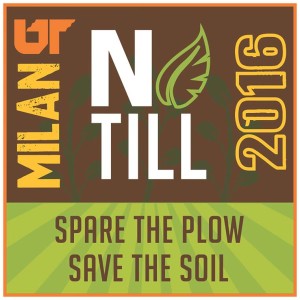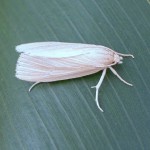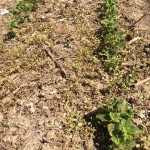We will learn a lot over the next couple of weeks on the extent of the glyphosate and PPO resistant Palmer amaranth. In an effort to get an early estimate of where we are at, we randomly collected Palmer amaranth from fields in Shelby, Hardeman, Tipton, Madison, Weakley, Obion, Gibson, Carroll, Lake and Dyer counties. We sent these samples to Dr. Bryan Young at Purdue University to determine if they had the PPO resistant gene. Continue reading
Category Archives: Soybean
Comment Period on Proposed Dicamba label for Roundup Xtend Crops is Ending
The end of the EPA open comment period for registration of dicamba (specifically the product M1691) on Roundup Xtend cotton and soybean is May 31st. I just checked and there is well over 4000 comments to date. I opened a few and many are favorable and there are a good number that are not. I know we are in the middle of planting but it might be good to let your opinion be heard as well. Continue reading
Cover Crop Burndown Learning Curve
Judging by questions we all are getting this spring, clearly we are having some growing pains managing cover crops across Tennessee. Indeed the 2nd most common question I have gotten over the past month is how and when to burndown a cover crop “X“ before a cash crop “Y”. Continue reading
Milan No-Till Field Day Set for July 28
 MILAN, Tenn. – UT AgResearch will host the Milan No-Till Crop Production Field Day on Thursday, July 28, 2016 at the AgResearch and Education Center at Milan. The event will offer 40 research-based presentations. Sessions will cover best management strategies for no-till crop production, including nutrient enhancement, water use, new technologies in pest control and advancements in plant breeding.
MILAN, Tenn. – UT AgResearch will host the Milan No-Till Crop Production Field Day on Thursday, July 28, 2016 at the AgResearch and Education Center at Milan. The event will offer 40 research-based presentations. Sessions will cover best management strategies for no-till crop production, including nutrient enhancement, water use, new technologies in pest control and advancements in plant breeding.
The event is free and open to the public. Gates open at 6 a.m. Presentations and an agricultural industry trade show begin at 7 a.m. The field day will conclude at 2 p.m.
A schedule, a list of presentation topics, and information on pesticide recertification points as well as Certified Crop Advisor CEUs are available at http://milan.tennessee.edu/MNTFD. Individuals are also encouraged to follow the event on social media platforms using the hashtag #MilanNoTill.
Glyphosate-Resistant Grass Species Management
A few years ago clethodim was rarely used in Tennessee but in the last couple of years that has really changed. Clethodim has become the tankmix of choice with glyphosate to control glyphosate-resistant (GR) ryegrass, johnsongrass, goosegrass and in some areas, barnyardgrass. Continue reading
Moth Trapping Data for 2016
 A reminder that moth trapping data for corn earworm, tobacco budworm, and southwestern corn borer are posted weekly on this website. Look for “Moth Trapping Data” on the quick links menu to open an Excel file with the trapping data. Moth catches were low for all species last week.
A reminder that moth trapping data for corn earworm, tobacco budworm, and southwestern corn borer are posted weekly on this website. Look for “Moth Trapping Data” on the quick links menu to open an Excel file with the trapping data. Moth catches were low for all species last week.
Soybean PRE Applied Residual Considerations
There have been a number of calls where folks have asked my thoughts on “creative” PRE applied herbicides for soybeans. Continue reading
Palmer Amaranth Escaping PPO and Glyphosate Tankmixes

The first reports of small Palmer amaranth escaping PPO and glyphosate tankmixes started today (5/13/16). Continue reading

